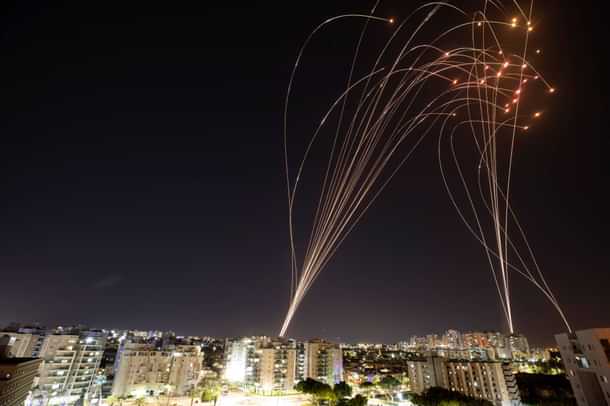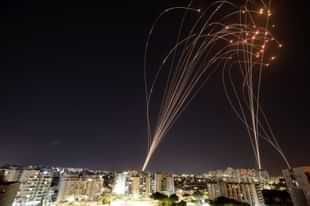News Brief
Explained: How Israel’s Iron Dome Brings Down Rockets Fired By Palestinian Terrorists From Gaza
Swarajya Staff
May 12, 2021, 02:43 PM | Updated Jun 04, 2021, 10:35 AM IST
Save & read from anywhere!
Bookmark stories for easy access on any device or the Swarajya app.


During recent Israel-Palestinian conflicts, explosions in the sky have come to accompany the blare of sirens on the streets. It is Israel’s Iron Dome at work, bringing down rockets fired by the Hamas from the Gaza Strip.
Iron Dome is an air defence system, developed in the 2000s by the Israeli defence majors Rafael Advanced Defense Systems and Israel Aerospace Industries with significant technical and financial assistance from the US.
Designed to stop short-range rockets, the system was put to work in 2011, and its first combat intercept came less than a month later, when it brought down a BM-21 Grad launched from Gaza. Israeli officials and defence companies say the system can bring down rockets with a success rate of over 90 per cent.
An Iron Dome battery has a search/fire-control radar, a battle management and weapon control system and launchers carrying Tamir interceptors.
When a rocket is detected by the radar, the system immediately calculates and monitors the projectile’s trajectory. It uses this data to determine where the rocket could land. If the rocket is likely to land in a populated area, near a military base or important infrastructure, Tamir interceptors are fired to defuse the threat. If the rocket is likely to land in an unpopulated area, in the empty desert or into the sea, intercepting is not attempted — interceptor missile are costly.
Each interceptor missile costs about $40,000-$50,000, and two are fired at one target in some cases to increase the probability of kill.
Tamir interceptor missile is equipped with an active radar seeker and a command data-link system to chase incoming rocket and reach close to it. When the missile is in a close range of its target, the onboard proximity fuse detects the enemy object and detonates the warhead, taking the object, in this case a rocket fired by Hamas from Gaza, out of the sky.

When the high-explosive warhead of the interceptor detonates, a ring of shrapnel erupts outwards in a wedge shape pattern.
But the system has not been flawless, and also has a “saturation point”.
Hamas has tried to exploit this limitation by firing its crude and mostly inexpensive rockets in massive crowded salvos and has enlisted allies in Lebanon and Syria to launch rockets, in an attempt to overwhelm the system by forcing it to cover a greater area, believing that at least a few rockets fired towards Israel will be able to breach the shield and land uninterrupted.
On 11 April, Hamas fired over 200 rockets into southern Israel in the span of an hour, killing at least two people, including Soumy Santhosh, a 30-year-old Indian woman from Kerala's Idukki district, who worked as a caregiver.
However, Iron Dome has ensured some degree of normality in the southern part of Israel, where people once lived under the shadow of rocket strikes.
By bringing down the number of casualties in rocket attacks from Hamas, the Iron Dome has reduced pressure on the Jewish state to send troops to Gaza during times of conflict, as it had done in 2008 and 2009.
The Iron Dome system has also been criticised citing the “high” cost of interception, but Israeli officials say it has saved billions in physical damage to infrastructure, its economic impact, and also military expenditure.





